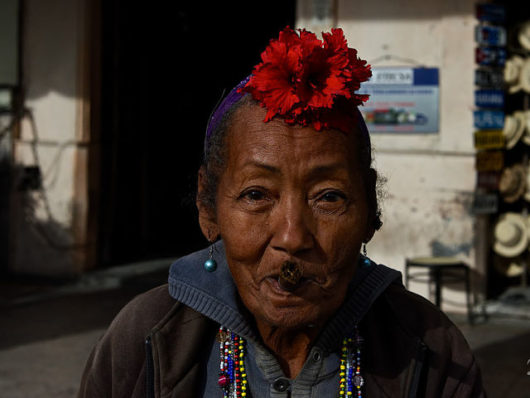10 Facts About Life Expectancy in Cuba

Cuba is a large island located in the center of the Caribbean Sea. The country has made a tremendous effort in improving healthcare and, therefore, increasing the average life expectancy for its residents. There is still room for improvement though, as the average life expectancy is less than those in first world countries. The following are 10 facts about the average life expectancy in Cuba that sheds light on the issues and improvements Cuba has made to increase the average lifespan.
10 Facts About Life Expectancy in Cuba
- Cuba’s estimated average life expectancy was 78.9 years in 2018 while the U.S. is just above their rank at 80.1. This puts Cuba at number 56 in the world for life expectancy. The U.S.’s rank is 45 in comparison. Cuba’s average life expectancy is excellent compared to most developing countries and has increased substantially in the last 50 years. The average life expectancy in Cuba was 63.8 in 1960.
- Smoking is prevalent in Cuba. At least 40 percent of men and 33 percent of women smoke tobacco in Cuba. Reducing this number would increase the average life expectancy as smoking tends to increase respiratory diseases. In one study, 41 percent of all deaths in Cuba in 2002 were from heart disease, stroke and “other unspecified diseases of the heart and veins,” and one such cause is due to frequent cigarette smoking.
- The prevalence of abnormally high blood pressure, or hypertension, is estimated to be around 25 percent in Cuba. About 70 percent of people who experience a heart attack have high blood pressure as do about 80 percent who suffer a stroke. The good news is that Cuba has been effective in treating patients with high blood pressure. In 2002, about 39 percent of Cubans aged 35 to 60 with high blood pressure were taking medication that successfully lowered their blood pressure to normal levels. These results are the highest in the world. To compare, the U.S. has a 29 percent rate for successfully treating hypertension patients in that age range.
- Since 2012, Cuba has had only one to two cases of pediatric HIV per year. Pediatric HIV is the spread of HIV from the mother to the baby. The World Health Organization recognized Cuba as the first country to eliminate the mother-to-child transmission of HIV and congenital syphilis.
- Despite Cuba being a developing country, their health care is exceptional. Cuba has universal healthcare, and infant and maternal mortality rates are less than most developing countries. The infant mortality rate is at four out of 1,000 children and maternal mortality is 39 out of every 100,000 births. There’s still space for improvement, but these numbers often decline as a country develops and improves things such as healthcare technology. This is still an impressive number when considering the infant mortality rate was 32 in 2015.
- The 1990s, the U.S. embargo against Cuba led to a reduction of medicine being sent to Cuba, which put lives at risk. In 2000, the Trade Sanction Reform and Export Enhancement Act allowed trade to resume, allowing the needed medications to enter the country. Cuba’s major importer for medications is the U.S. With medicine imported from the U.S. and other countries, Cubans have a higher average life expectancy than the rest of Latin America. Medication shortages let to a 48 percent increase in deaths from tuberculosis from 1992 to 1993. After the act was passed, deaths from tuberculosis decreased from .7 in 1997 to .2 in 2007 for every 100,000 Cubans.
- The United Nations Population Fund began in 1971 and seeks to extend reproductive and healthcare services in Cuba. The UNPF has reached more than 140,000 people. In 2017, the UNPF spent more than $300,000 in integrated sexual and reproductive health services, which included maternal health and HIV.
- According to the Cienfuegos survey referenced in the National Center for Biotechnology Information, only 30 percent of the people engaged in vigorous activity, but 93 percent engaged in some kind of moderate physical activity at least three days a week. In one study by the National Center for Biotechnology Information, participants who engaged in regular physical activity at least three times a week reduced their risk of mortality by 30 to 35 percent.
- One nongovernment organization called CARE began operating in 1995 during the Special Period in Cuba, an economic crisis caused by the dissolution of the Soviet Union. Most recently, in 2017, Hurricane Irma ravaged Cuba. Care was on site helping to provide clean water and sanitation as well as assistance with shelter for more than 20,000 people. One issue CARE worked on was disaster risk reduction by improving buildings so as to save lives whenever the next hurricane strikes. As an isolated island, Cubans along the coastline have a high chance of their homes being completely destroyed from deadly hurricanes, such as Hurricane Gustav in 2008.
- Cuba boasts the highest ratio of doctors-to-patients in the world. In 2006, for every 10,000 people, there were 59 doctors. By 2010, Cuba still held the number one spot, far above the U.S. and Great Britan. Cuba also sends its doctors to more than 40 countries across the world to assist in health care programs.
These 10 facts about life expectancy in Cuba explain why the average lifespan is currently at 78.9. The average life expectancy, although excellent compared to other developing countries, can still be improved by continuing their focus on high-quality healthcare. Another way to increase the average life span is by reducing the amount of Cubans that smoke tobacco.
Photo: Flickr
